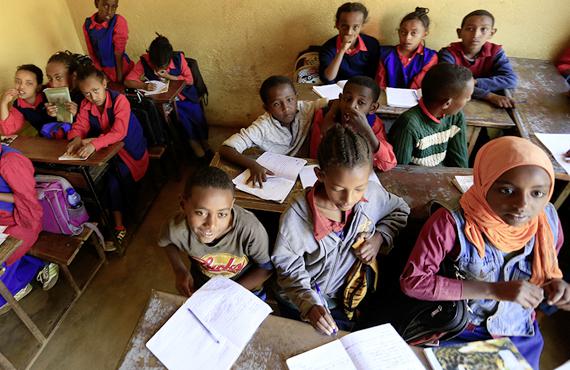DD: What is the post-2015 education agenda?
NB: The post-2015 education agenda aims to replace the Education for All (EFA) agenda, which was started in Jomtien (Thailand) in 1990 and renewed in Dakar (Senegal) in 2000 through six goals to be achieved by 2015. Some global progress has been achieved over the past 15 years, and the pace of change has even accelerated. However, EFA has not been achieved and remains an unfinished business. The objective of the post-2015 education agenda that will be adopted during the next United Nations General Assembly in September is to renew government and international community commitments to make EFA happen by 2030, while going beyond the initial targets. The new education agenda, which will be a full part of the whole sustainable development agenda, is ambitious. Its main objective is to “ensure inclusive and equitable quality education and promote lifelong learning” through seven targets and three means of implementation. The agenda to come will embrace the whole education spectrum, from early childhood to tertiary education and adulthood, while having learning/quality of education and equity at its core.
DD: What are the biggest obstacles to reaching the new education targets by 2030, especially in developing countries?
NB: There are at least three things that explain the failure to achieve EFA and that can be seen as obstacles to reaching the new education targets to be adopted in September. Among these are the following:
- Persistent inequalities in education at the expense of the poorest and the most marginalized. As the 2015 EFA Global Monitoring Report shows, in low- and middle-income countries the poorest children, in particularly girls, are four times less likely to attend school than the richest children, and five times less likely to complete primary school.
- Conflict is another major obstacle to education. In 1999, 30% of children not enrolled in school worldwide were living in conflict-affected countries and zones, and the percentage increased to 36% in 2012. The lack of sufficient finance devoted to education is another reason why the world has failed to achieve EFA.
- Education is still not a priority in many government budgets, while international aid for education is short of commitments. Aid for education was US$ 12.6 billion in 2012 and has decreased by US$ 1.3 billion since 2010. This is not of good omen in the face of the US$ 39 billion estimated annual financing gap for reaching universal preprimary, primary and secondary education of good quality in low- and lower middle-income countries by 2030.
DD: Is donor aid still needed?
NB: Overall, international aid accounts for a small portion of education financing and countries themselves have to make education a priority in their budgets and mobilize domestic resources accordingly. Yet, as the 2012 Global Monitoring Report showed, a number of countries are quite dependent on aid. In nine countries, all in sub-Saharan Africa, donors fund more than a quarter of public spending on education. For example, in Mozambique aid made up 42% of the total education budget during most of the period 1999–2010. So, while the post-2015 education agenda is setting financing targets for countries, donors must also tackle the financing gap. Most of all, aid for education should go to the countries that need it most. Currently, that is far from being the case.
DD: How do you proceed in conflict-afflicted regions and/or countries with little to no data?
NB: Data availability is an important challenge when it comes to monitoring goals and to assessing progress made, in particular in conflict-affected countries and countries with poor education management information systems more generally. Indeed, the progress made by more than 30 countries could not be fully reflected in the 2015 EFA Global Monitoring Report, owing to a lack of sufficient data, either enrolment or population data, reported to the UNESCO Institute for Statistics over the period 1999–2012. Thus, the Global Monitoring Report team made a concerted effort to find other sources of information, including national sources, on selected EFA goals. The overall aim was to provide an indication of the extent of education progress in each country since 1999, in the absence of cross-comparable data, which remain the basis of global monitoring. Country profiles were produced for the majority of these countries and will be posted on the Global Monitoring Report website.
Contributor

Nicole Bella is a Senior Statistician and Policy Analyst at the United Nations Educational, Scientific and Cultural Organization. She has a particular focus on population policies and education.


Post a comment